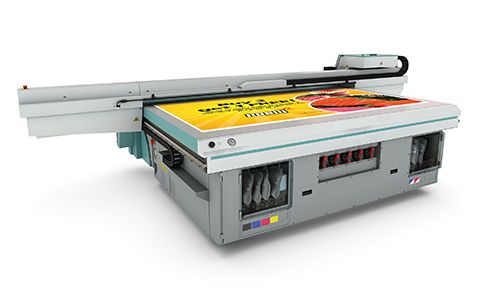Serving customers better
Ultimately, the choice to purchase a flatbed printer is a question of capacity, i.e. a way to respond to an increasing number of orders from customers. As mentioned, most projects today need a quick turnaround, so when that need cannot be met, it is time to add more equipment.
“In today’s business culture, there is also a connective need for PSPs and sign shops to serve as more of a consultative advisor to their customers than in the past,” says Roden. “This presents an opportunity to show clients what they need before they need it, showcasing innovations that can be accomplished with newer flatbed printing and finishing technologies.”
The key is to still focus on the right applications. There is a lot of flexibility in digital inkjet printing that makes it possible to create many different types of products, but rather than trying to do everything, it makes more sense to do one thing very well.
Consider the example of Holland & Crosby in Mississauga, Ont. Founded in 1932 as a screenprinting shop, it established a digital department in 2004. In 2008, it became the first company to install an Inca Digital Onset flatbed printer. Its 3,066-m2 (33,000-sf) production and distribution facility could potentially output all types of graphics, but instead is highly focused on retail-based POP signage programs, from creative and structural design to prototyping and printing to finishing, storage and shipping.

Flatbed printers allow sign shops to expand into producing edge-to-edge graphics, lenticular displays and ’tiled’ graphic panels with repeatable registration.
“POP makes up 90 per cent of our work and the rest is event marketing,” explains Scott Crosby, vice-president (VP) of sales and marketing. “We stock 15 standard materials in a 1.5 x 3-m (5 x 10-ft) format. A lot of other shops straddle screenprinting and digital with different sheet sizes for each run, which can take up a lot of room and time to deal with. For us, digital was a replacement technology for screenprinting.”
Another flatbed printing company has succeeded in the U.S. by producing only real estate signs. When the owner decided to also print personalized photographic and artistic images on canvas and sell them online direct to consumers, allowing them to upload files from their computer hard drives or even Facebook and Instagram, he started an entirely different business—named Simple Canvas Prints—for that purpose, as it would require its own distinct market strategy.
Achieving potential
Today’s digital flatbed inkjet printers offer simplicity of use and the versatility to produce both flexible and rigid display graphics. They also offer the potential for profit growth, but the nature of that growth will depend on the individual approaches of the PSPs and sign shops that use them.
With files from Fujifilm North America’s graphic systems division. This article is based in part on a seminar presented by Heather Roden in April at the Specialty Graphic Imaging Association’s (SGIA’s) opportunity zone at the Graphics Canada show. For more information, visit www.fujifilm.ca, www.sgia.org and www.graphicscanada.com.
|
Five ways white ink wins more business |
|
Traditional substrates for printing are white, so CMYK inks are added to areas where colour is needed. With white ink, however, almost any type of specialty media or object can become a printable substrate. The following are five ways to use white ink: 1. Spot colour 2. Primer 3. Flood 4. Centre sandwich layer 5. Multi-layer textured build Heather Roden is associate product marketing manager for Fujifilm North America’s graphic systems division. For more information, visit www.fujifilm.ca. |






